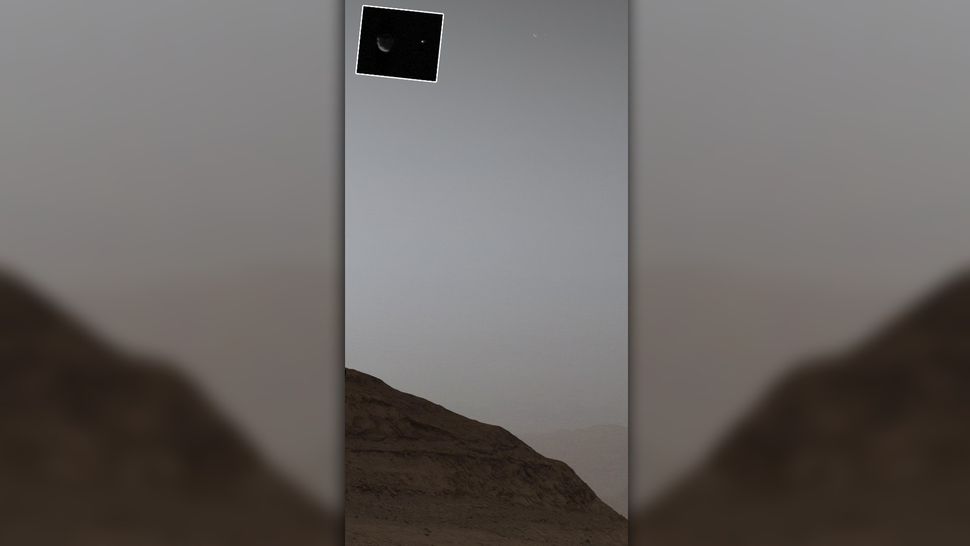NASA’s Curiosity rover has captured a spectacular sight from the surface of Mars: The first-ever photo of Earth alongside the Red Planet’s moon Phobos.
Using its Mast Camera, or Mastcam for short, Curiosity photographed Earth setting the Red Planet night sky while one of Mars’ two moons, Phobos, rises on Sept. 5. The rover’s new view, which consists of five short exposures and 12 long exposures, captures a rocky Martian outcrop in the foreground and an expansive sky with Earth and Phobos seen in the upper right. An inset in the image, which NASA shared online on Sept. 13, identifies Phobos on the left and Earth on the right.
“It’s the first time an image of the two celestial bodies have been captured together from the surface of Mars,” NASA officials said in a statement releasing the new photo. “From the rover’s perspective, the inset area would be about half the width of a thumb held at arm’s length.”
Phobos is named after the Greek god of fear and is the larger of Mars‘ two moons. Its smaller companion is named Deimos.
Phobos orbits the Red Planet three times a day at a distance of only 3,700 miles (6,000 kilometers) from the Martian surface, making it closer to its primary body than any other known natural satellite to a planet.
Related: Solar eclipse on Mars! Perseverance rover sees Martian moon Phobos cross the sun in epic video

Given its close proximity, the moon is thought to be on a collision course with Mars. It’s nearing the planet at a rate of six feet (1.8 meters) every hundred years, which means that it will either crash into the Red Planet in about 50 million years or break apart from Mars’ gravitational influence.
Curiosity has been exploring Mars for over a decade, having landed in Gale Crater in August 2012. The image of Earth and Phobos was taken on the 4,295th Martian day, or sol, of Curiosity’s mission. One Martian sol is about 24 hours and 40 minutes, making it slightly longer than a single Earth day.
The rock structure captured in the foreground of the new Curiosity view is a butte called Texoli located on lower Mount Sharp within Gale crater. Texoli is a 3-mile-tall (5-kilometer-tall) mountain that Curiosity has been ascending since 2014 to help unravel the history of Mars.